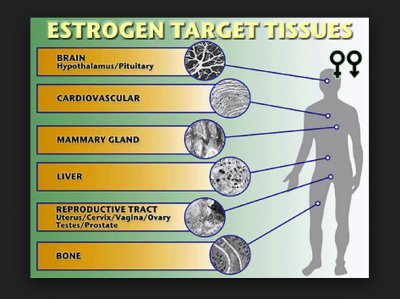Nelson Vergel
Founder, ExcelMale.com

Historically, when we think of sex hormones in men and women, we identify testosterone as the core regulator of orderly male growth and sexual function. In a similar fashion, we identify estrogens central to regulating sexual and reproductive function along with a host of non-reproductive functions in women. 17ß-Estradiol or E2, the principal form of estrogen, is also produced in significant quantities in males. Research over the last two decades has demonstrated that estrogens can play a pivotal role in regulating male sex drive, erectile function, spermatogenesis, and can also be responsible for body fat distribution, bone density, and overall morbidity and mortality. High estradiol, however, is known to cause breast tissue growth (gynecomastia) and water retention in men. Because of this dynamic, regulation of the balance of testosterone and estradiol in males is paramount. Although there is evidence to suggest that lower levels of estradiol (10-20 pg/ml) can increase bone loss, the impact of high levels of estrogen on male reproductive function and other morbid conditions is complex, and it is difficult to discern upper values for the optimal range where deleterious effects begin to occur. The impact of both estrogen deficiency and excess remains controversial. We present here a background of estradiol in men along with studies that highlight the importance of estrogen in male physiology.
Click:
More here
Last edited:

















